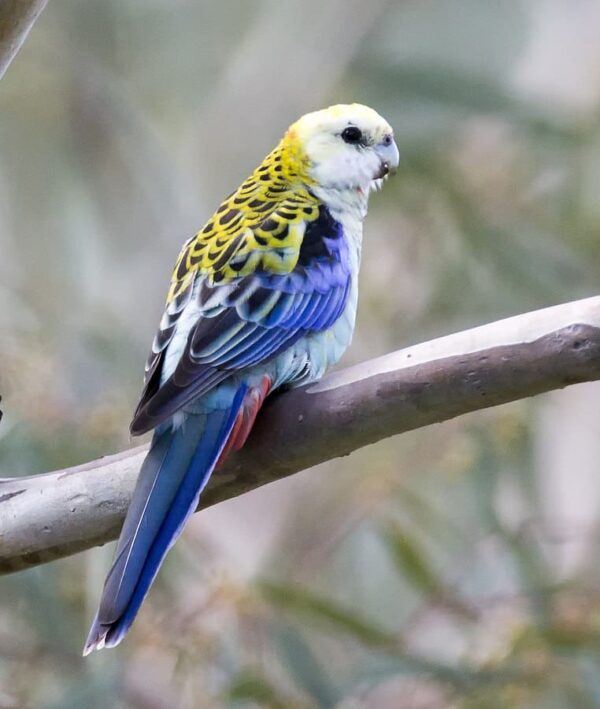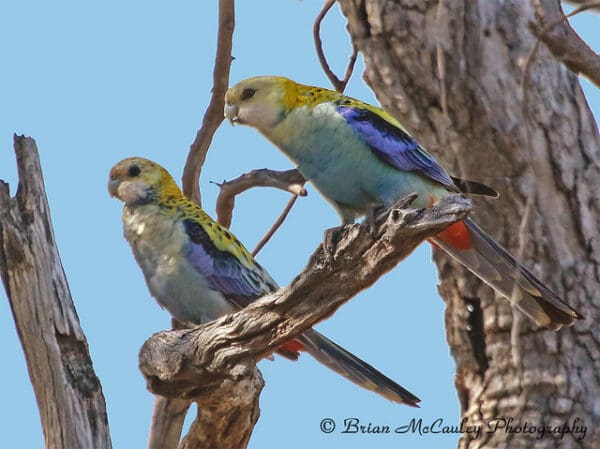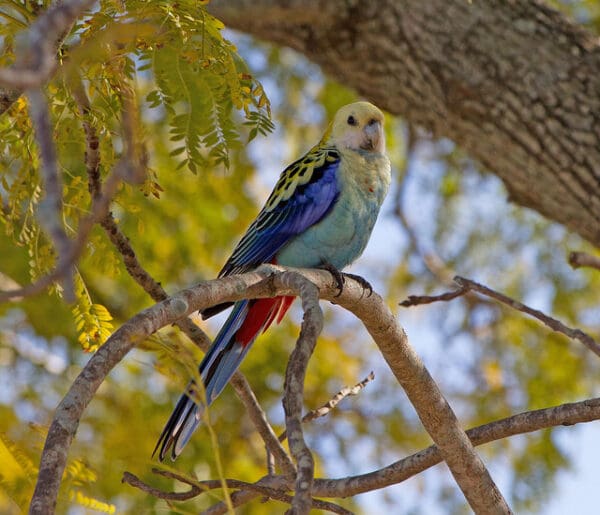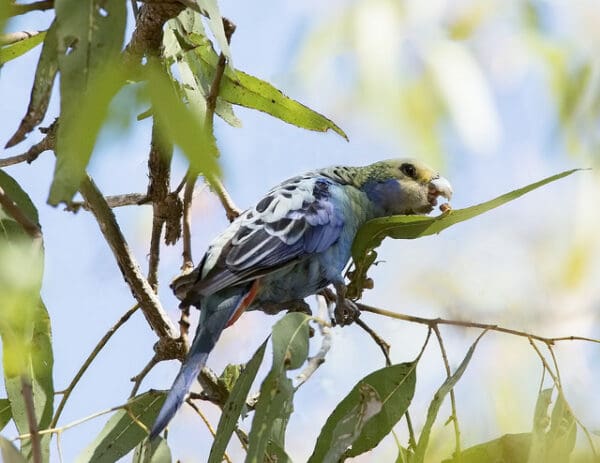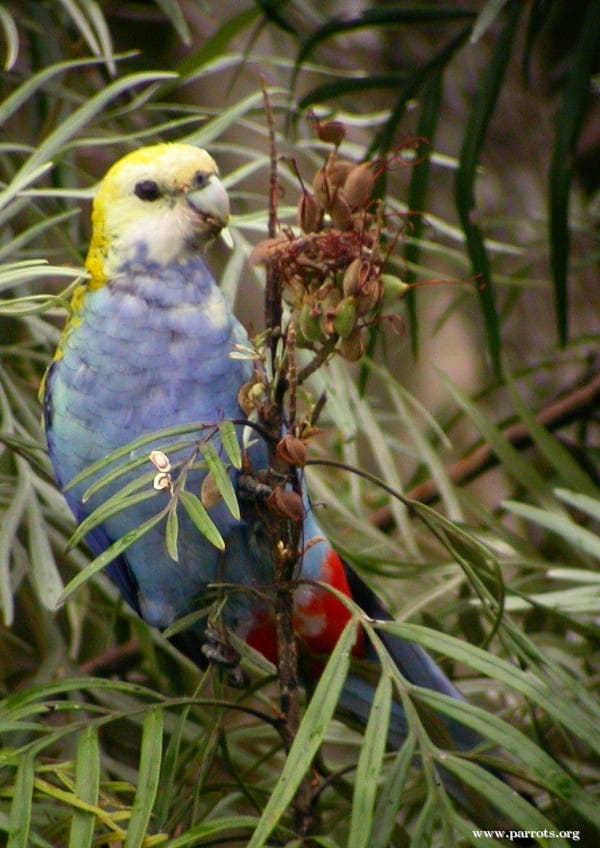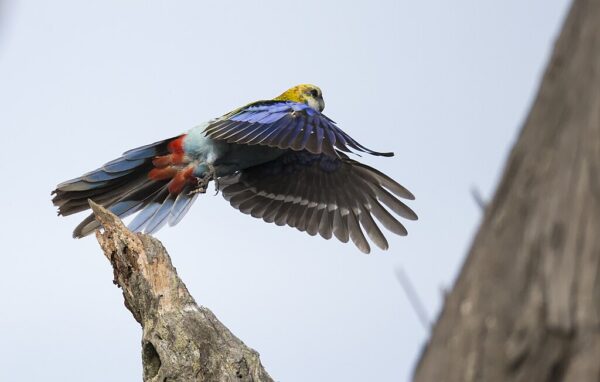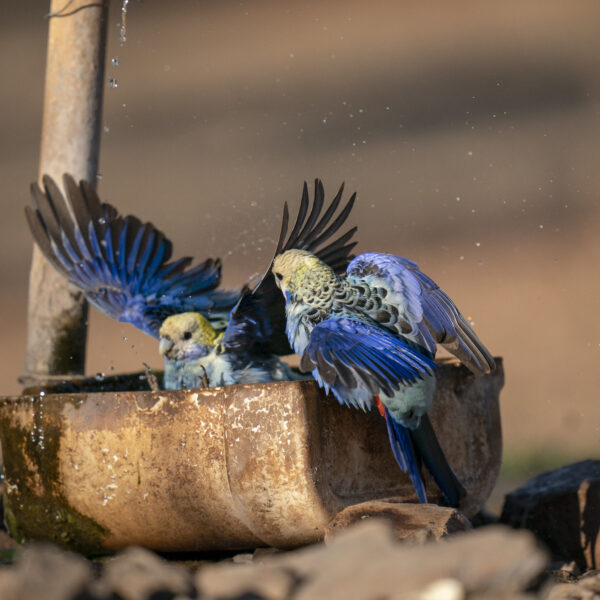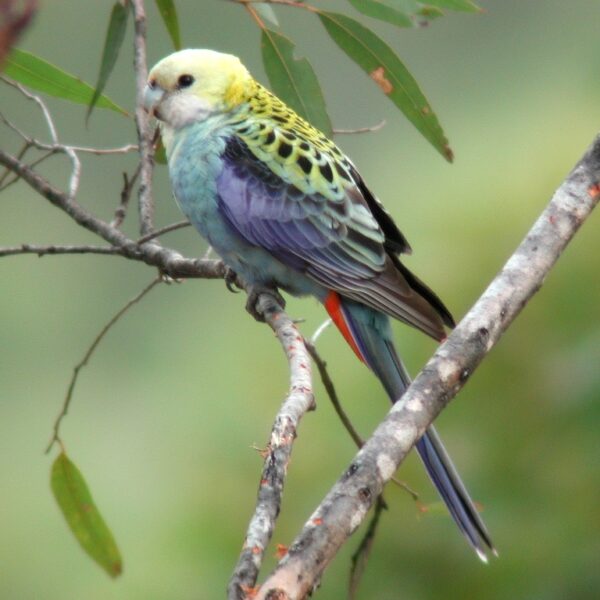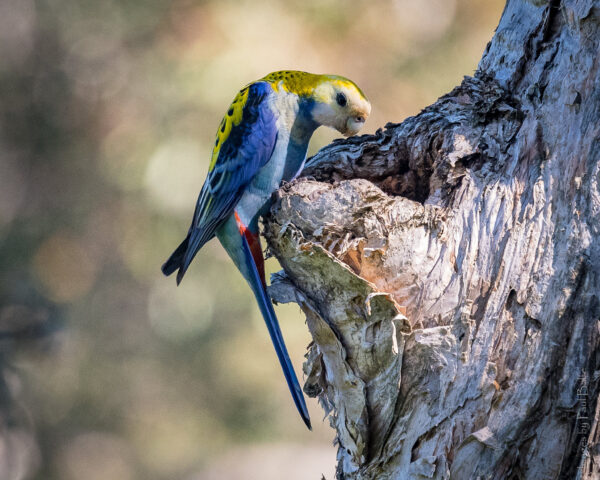Pale-headed Rosella
Also known as:
Mealy Rosella or Parakeet, Moreton Bay Rosella or Parakeet, Blue Rosella, White-headed Rosella, Blue-cheeked Rosella
Also known as:
Mealy Rosella or Parakeet, Moreton Bay Rosella or Parakeet, Blue Rosella, White-headed Rosella, Blue-cheeked Rosella
![© Jim Bendon [CC BY-SA 2.0] via Wikimedia Commons A wild Pale-headed Rosella perches on a limb](https://gt2024.parrots.org/wp-content/uploads/1990/09/Pale-headed-Rosella-Jim-Bendon-e1732303671998-100x100.jpg)
![© Brian McCauley [CC BY-ND 2.0] via Flickr Wild Pale-headed Rosellas perch high in a tree](https://gt2024.parrots.org/wp-content/uploads/2023/01/wpt_Pale-headed-Rosella_1189-17-100x100.jpg)
![© Michael Jeffries [CC BY-ND 2.0] via Flickr A wild Pale-headed Rosella perches in a tree](https://gt2024.parrots.org/wp-content/uploads/2023/01/wpt_Pale-headed-Rosella_1189-12-100x100.jpg)
![© JPatty McGann [CC BY-ND 2.0] via Flickr A wild Pale-headed Rosella forages in a tree](https://gt2024.parrots.org/wp-content/uploads/2023/01/wpt_Pale-headed-Rosella_1189-11-100x100.jpg)

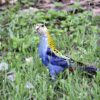
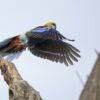

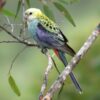
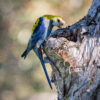
DID YOU KNOW?
The Pale-headed Rosella usually nests in hollow tree trunks but have also been known to use fence posts.

Platycercus

adscitus
Size:
30 cm (11.7 in)
Weight:
95-120 g (3.3-4.2 oz)
Subspecies including nominate:
two: P.a. adscitus, P.a. palliceps
Colour Adult:
P.a. adscitus: Male-pale yellow crown to ear coverts; white upper cheek patches, blue lower; yellow upper breast; blue lower breast and abdomen; red undertail coverts; black back with pale yellow mottling; blue outer wing coverts. Beak white. Eye brown. Female-in general duller than male; pale underwing stripe present.
P.a. palliceps: Both adults plumage variable; green/blue rump and upper tail coverts; yellow/white head; golden/yellow mottling to back; blue underparts reaching into yellow/white breast, but variably blue may reach up to throat and lower cheeks. Slightly larger.
Colour Juvenile:
P.a. adscitus: Grey crown and nape, tipped yellow or orange/red; pale yellow underparts; pale underwing stripe present.
P.a. palliceps: As in juvenile adscitus, but green/blue rump and upper tail coverts.
Call:
Contact call while in flight described as sharp and short; while perched a three syllable whistle on ascending scale or metallic piping. Alarm call is shrill and screechy. Feeding is done in silence. In treetops there is much soft chattering in groups.
More Information:
Content Sources:
CITES
BirdLife International
Cornell Lab of Ornithology/Birds of the World
Parrots: A Guide to Parrots of the World, Juniper and Parr, 1998
Parrots of the World, Forshaw and Cooper, 1977. 2010 edition
Parrots of the World, Forshaw, 2006.
Lexicon of Parrots, Thomas Arndt.
Parrots in Aviculture, Low, 1992.
Captive Status:
Common in EU, less so in US.
Longevity:
15+ yrs
Housing:
Walk-in enclosure, minimum length 4.5 m (14.7 ft). Do not house this species next to other rosellas.
Diet:
Small seed mix such as: canary, oats, safflower and a little hemp; spray millet; limited sunflower seed, dry, soaked or sprouted; sprouted mung beans, cooked butterbeans and lentils; boiled maize; green leaves such as: Swiss chard, lettuce, sowthistle, dandelion, chickweed, daily; vegetables such as: carrot, corn, celery, zucchini, squash, green beans and peas in the pod; fruit such as: apple, pear, orange, banana, pomegranate; nuts such as: lightly cracked hazelnuts, pecans and roasted peanuts; complete pellet.
Enrichment:
Enjoys scratching around in soil; for this reason needs to be regularly dewormed. Enjoys bathing, so provide overhead misters or shallow bowls of water. Vigorous chewer, so provide bird-safe, unsprayed flowering, fir, willow or pine branches; heat sterilized pine cones, wooden toys, different sized perches. Also ladders, swings and ropes.
Nest Box Size:
Vertical box 9″ x 9″ x 24″ (22.8 cm x 22.8 cm x 61 cm).
Clutch Size:
4-5
Fledging Age:
5 weeks
Hatch Weight:
—
Peak Weight:
—
Weaning Weight:
—
World Population:
Unknown; reported as abundant throughout range. Increasing.
IUCN Red List Status:
Least Concern
CITES Listing:
Appendix II
Threat Summary:
Not globally threatened. Abundant throughout most of range; appears to have benefitted from agriculture and cereal cultivation. In the south of its range, where it occurs with closely related P. eximius, it is sporadic in numbers.
Range:
P.a. adscitus: Confined to Cape York Peninsula, N Queensland.
P.a. palliceps: NE New South Wales north to NE Queensland.
Habitat:
Found up to 700 m (2296 ft) in a variety of habitats including open woodland, scrub, riverine woodland, grasslands, roadsides, Lantana thickets, agricultural areas, orchards and coastal heath.
Wild Diet:
Diet includes seeds of Eucalyptus camaldulensis, Casuarina cunninghamiana, Melaleuca linariifolia, Onopordon acanthium, Xanthium chinense, X. spinosum, Callitris and Acacia, also blossoms of Melaleuca, fruits of Dodonaea triquetra. Will feed in orchards and maize fields.
Ecology and Behaviour:
Seen in flocks or pairs feeding quietly on the ground or vocalizing in the bushes. Has benefitted from cultivation and the addition of artificial watering areas. Are noisy and conspicuous early in the day.
Clutch and Egg Size:
4-5 rounded eggs, 26.0 x 21.5 mm (1 x 0.8 in).
Breeding Season:
February-June in north; September-December in south. Nest is in deep hollow in living or dead tree.
